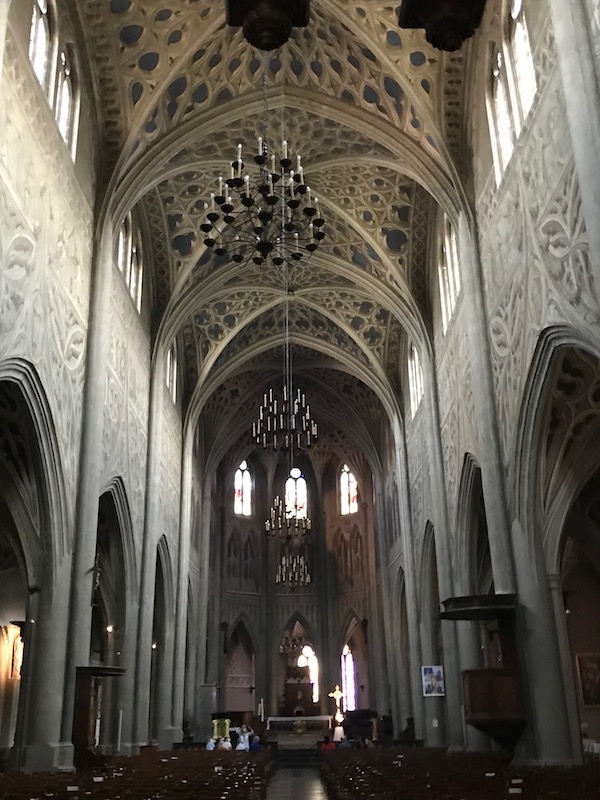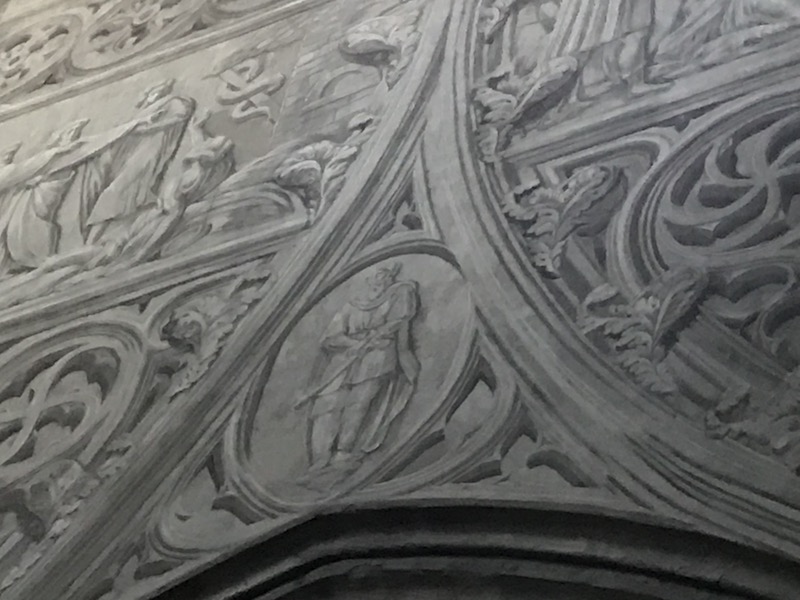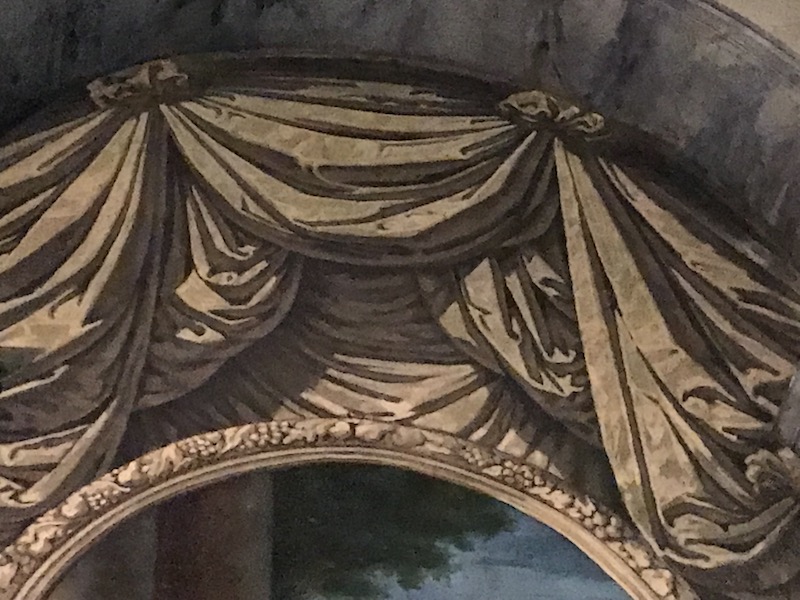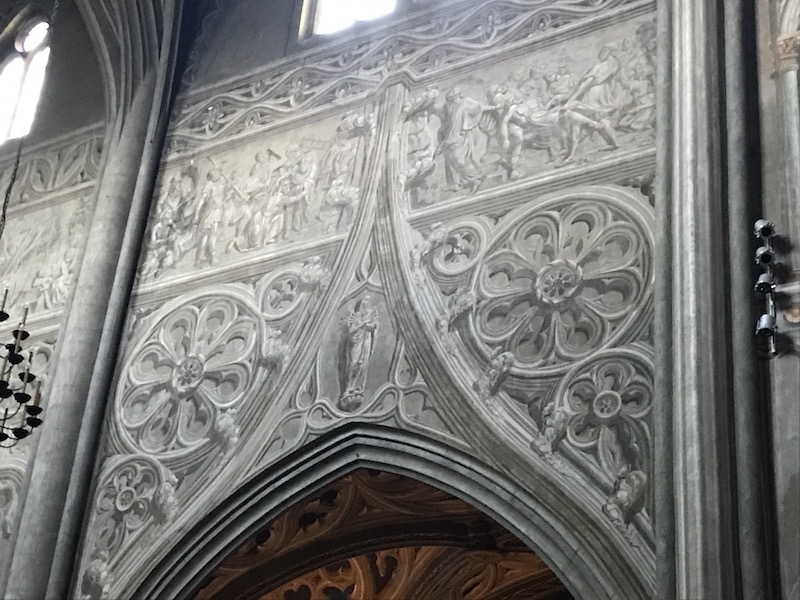Our Blog - Chambéry, France
The history of Chambéry is closely linked to the House of Savoy and was the Savoyard capital from 1295 to 1563. During this time, Savoy encompassed a region that stretched from Bourg-en-Bresse in the west, across the Alps to Turin, north to Geneva, and south to Nice. To insulate Savoy from provocations by France, Duke Emmanuel Philibert moved his capital to Turin in 1563, and, consequently, Chambéry declined.
France annexed the regions that formerly constituted the Duchy of Savoy west of the Alps in 1792; however, the former Duchy and Chambéry were returned to the rulers of the House of Savoy in Turin in 1815 following the defeat of Napoleon. The need for urban revitalization was met by the establishment of the Société Académique de Savoie in 1820, which was devoted to material and ethical progress, now housed in an apartment of the ducal Château. Chambéry and lands of the former Duchy, as well as The County of Nice, were ceded to France by Piedmont in 1860, under the reign of Napoleon III.
We spent a couple hours here, just walking around the old town, which is actually quite nice. At one of the main intersections, we found a large clock up at the top.
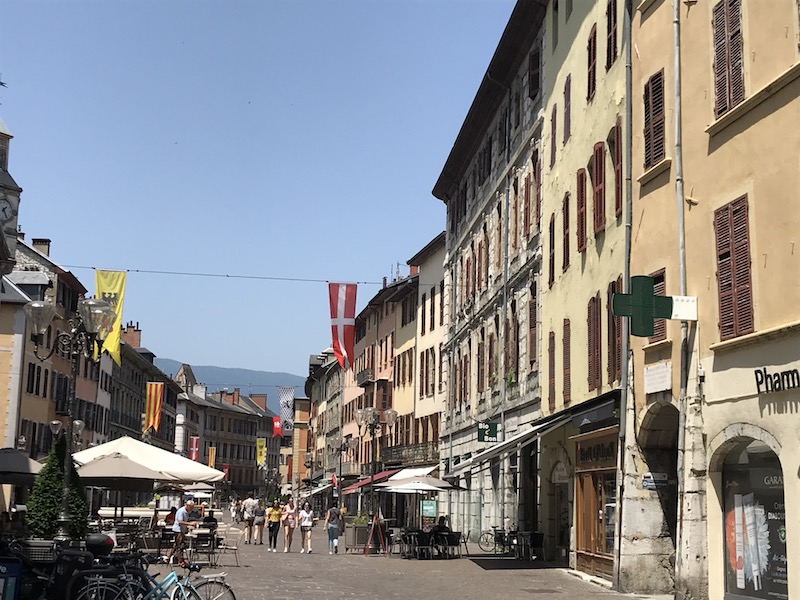

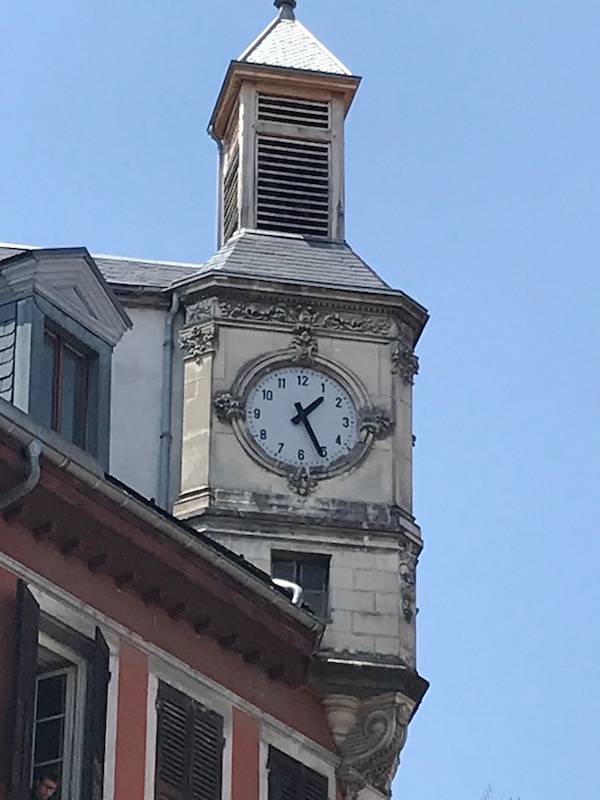
One of our first stops was for coffee at Brasserie Folliet. We have a friend who grew up in Chambéry and she mentioned that we should try this place. The business dates back to 1880 when Claude and Philomène Folliet opened a grocery store where, like most grocers of that time, also roasted coffee in a sheet metal grill heated with charcoal. The business continues through the family and in 1924, François Folliet decided to become a full-fledged coffee roasting company. It is a really nice story for a family-run business still today!
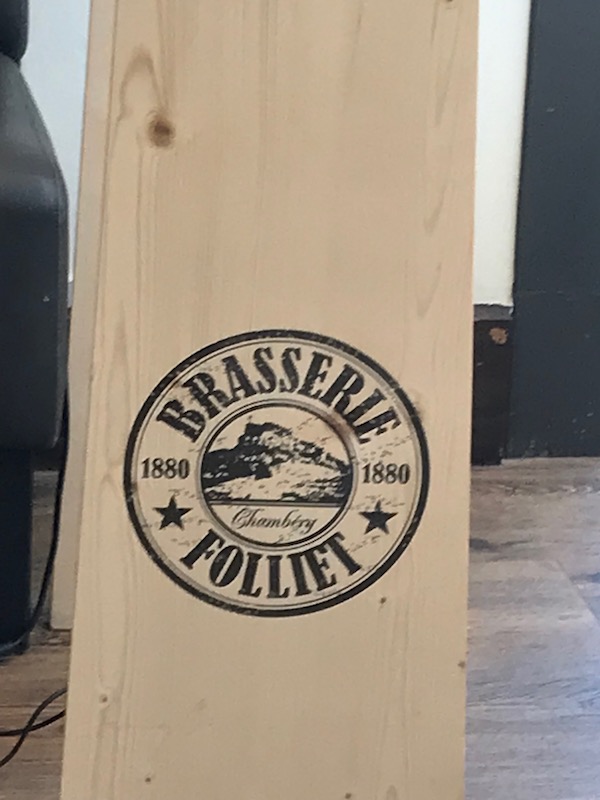
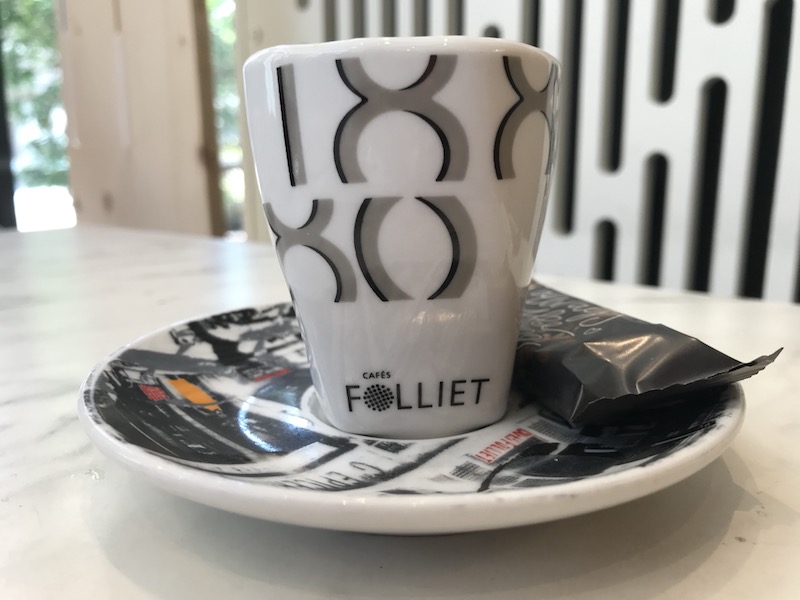
Here you can see a walkway to allow people to pass from one building to another without going downstairs and across the street. Most of these were removed, as they were a fire hazard because they allowed fires to more quickly spread.
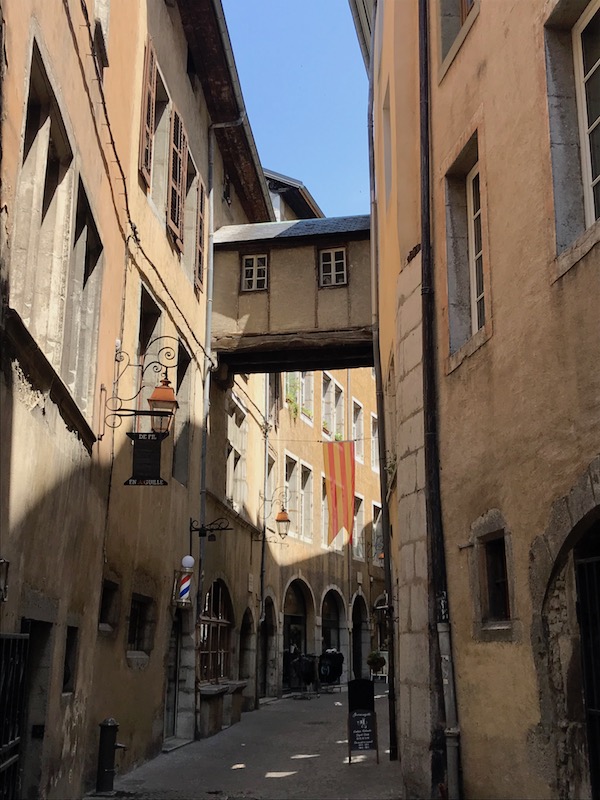
This is a typical store from the 15th century in Chambéry at one Rue Basse du Château, which was the main street in the Middle Ages. Here you can see the original medieval structure, with large stone benches that served as stalls.
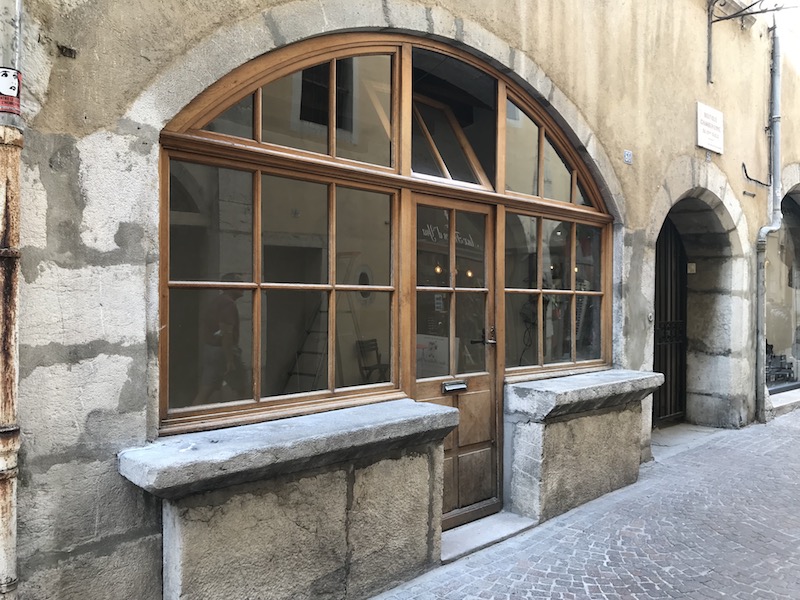
We made our way up to the Chateau. The castle dates from the 10th century and the Counts of Savoy bought the castle in the 13th century. There have been various additions and changes up to the 20th century. You can see the church, called Sainte-Chapelle, on the side where it was added in the 15th century when the original chapel became too small.
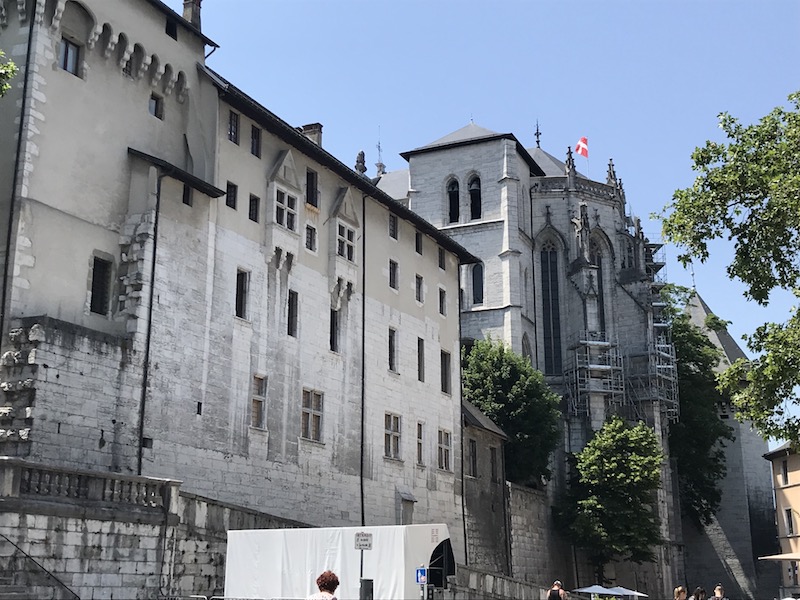

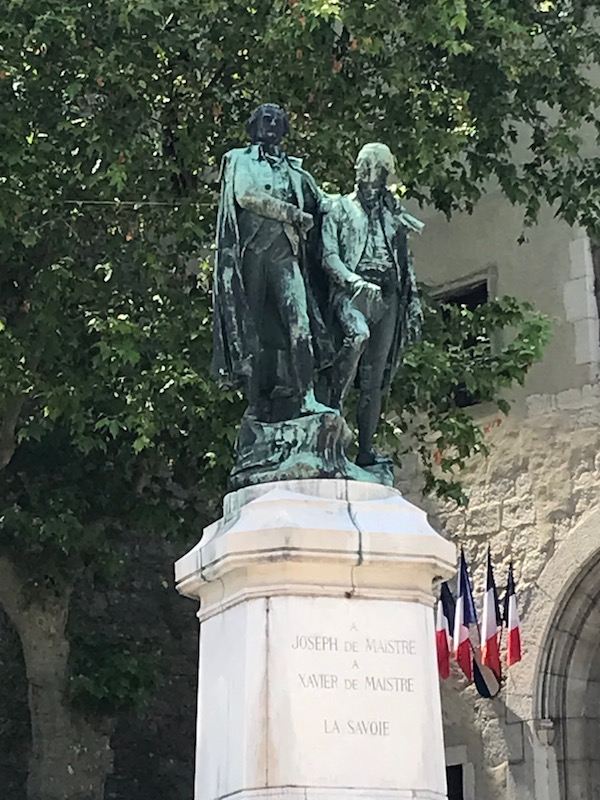

Similar to Lyon, the town has quite a few "traboules" or passageways. But if you dare to venture through a few of them, you can find some amazing little courtyards with highly decorated houses, some dating back to the 16th century, and vaults with carved keystones.

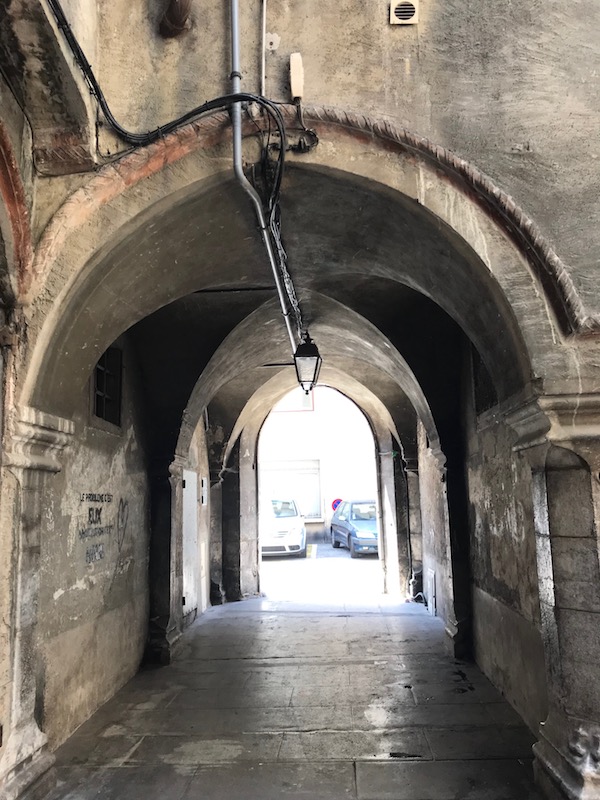
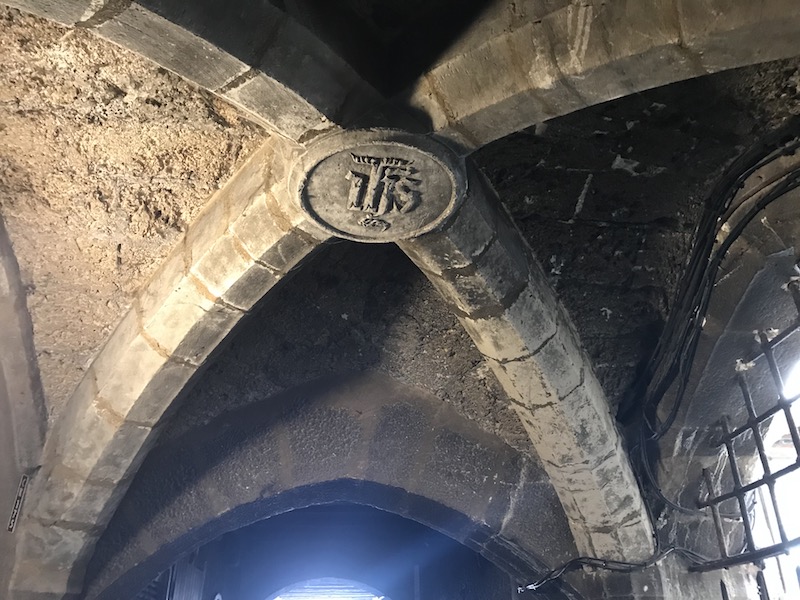
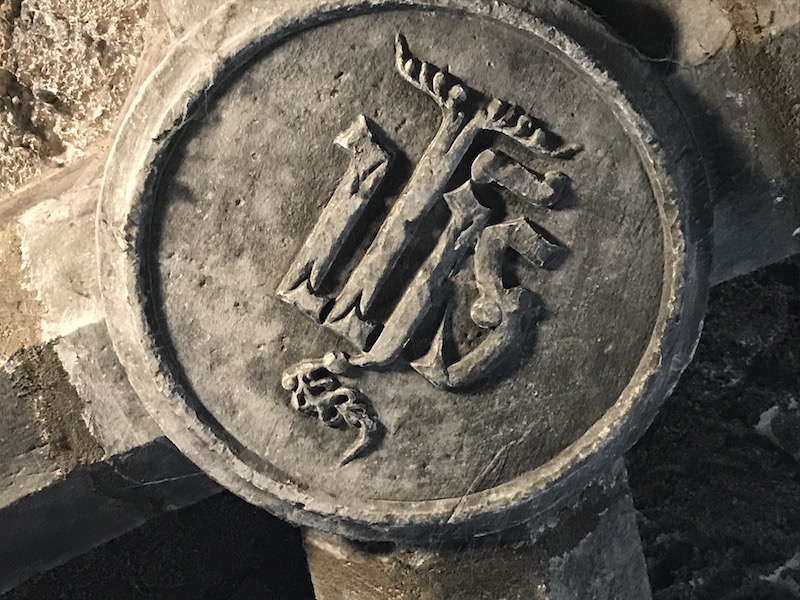
The Celise Morin gate, which dates back to around 1550, was saved from the ruins of the barbardment of Chambéry in 1944 and rebuilt in 1982.
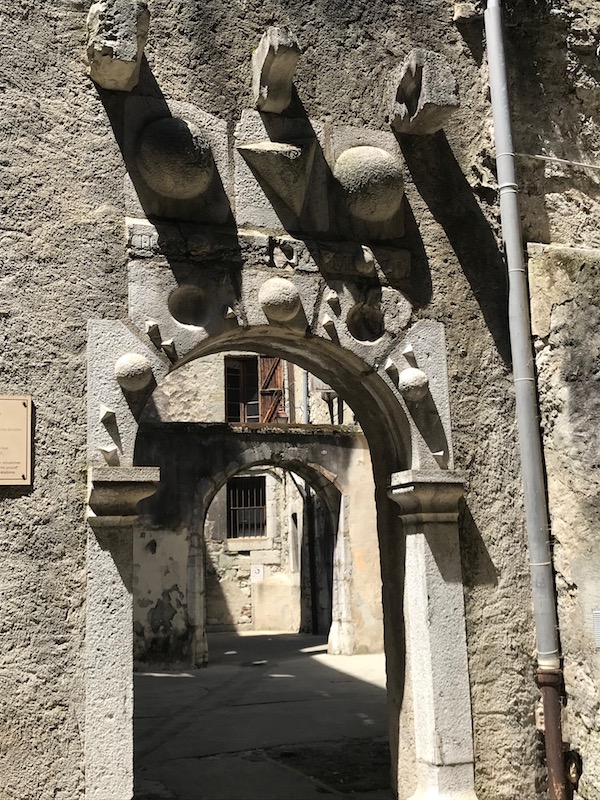
The first theater was built in the 1820's by General de Boigne. It was ravaged by fire in 1864 and this new theater was inaugurated in 1866. The bottom part of the façade is from the original building. While we couldn't go inside, supposedly it has one of the few remaining painted curtains in the world.

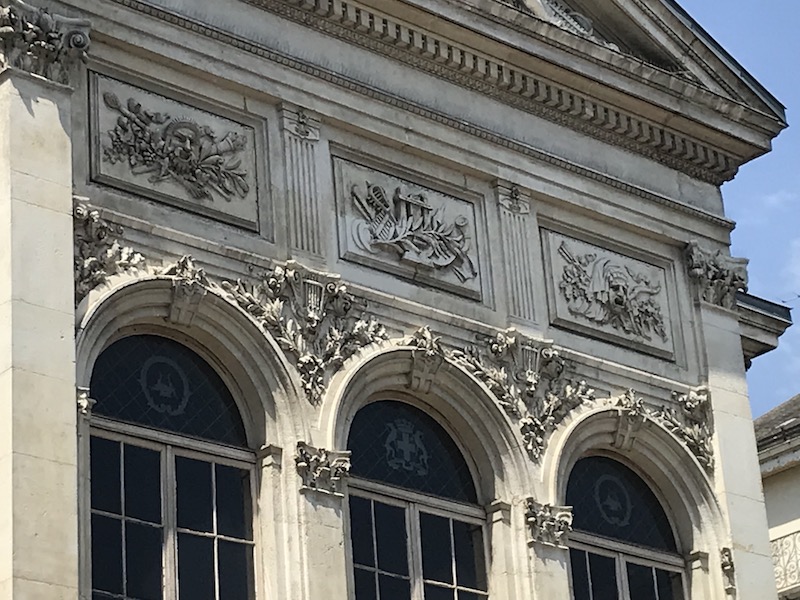
Probably the most famous sight in the town, the fountain of the Elephants is nicknamed "the four without asses" by locals. It was erected in 1838 in honor of General Count de Boigne, who was the main benefactor in the town. It is, in actuality, 3 different monuments. The fountain at the bottom has 4 elephants with water flowing from their trunks. You can only see the front part of each elephant, so you can see "4" elephants "without asses" (since their butts are not seen. Above that is a large column surrounded by military decoration, that supports a statue of the General.
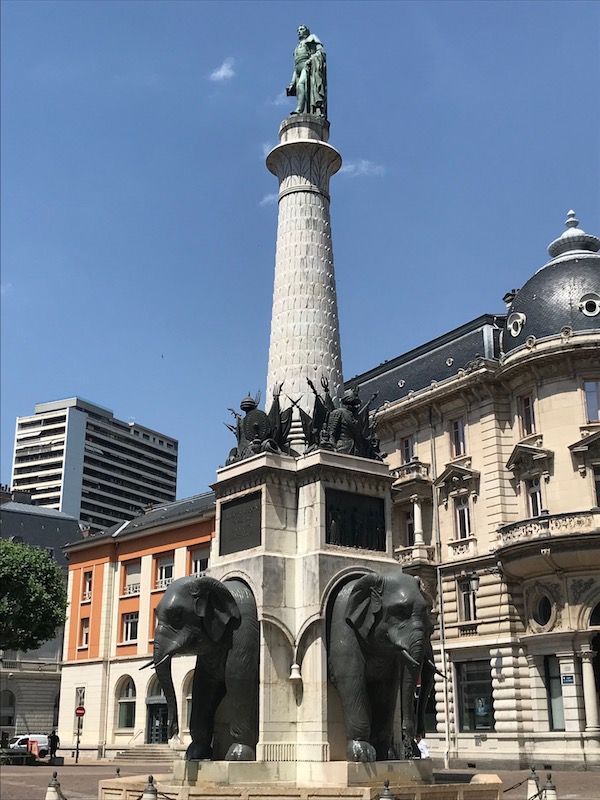
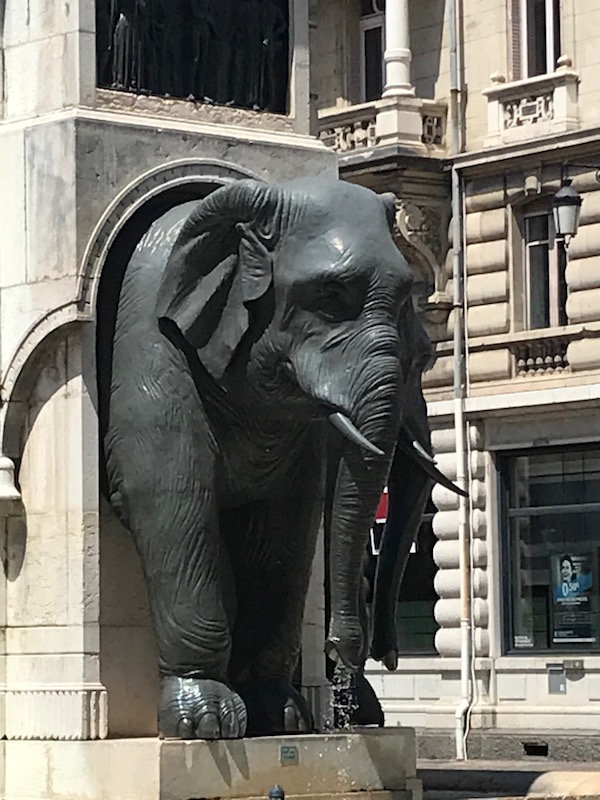
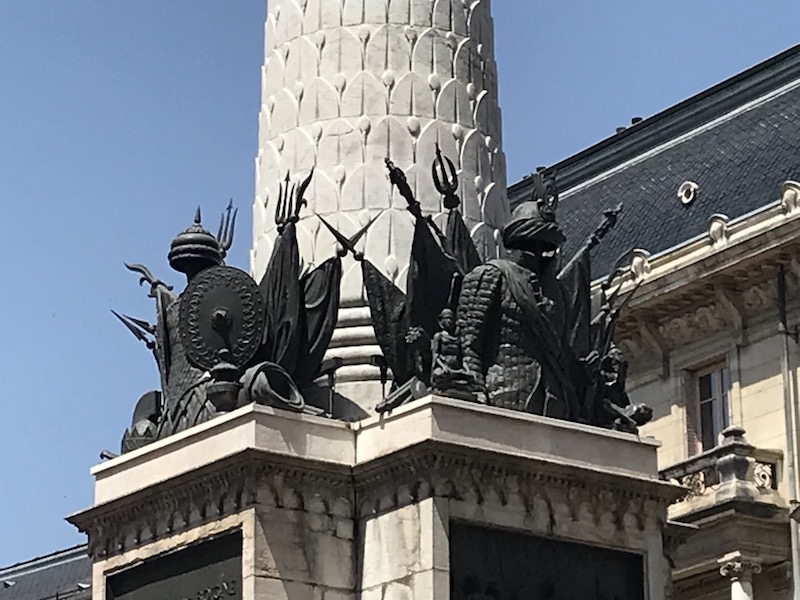
The cathedral of Chambèry, Saint-François-de-Sales Cathedral, was built in the 15th century and consecrated in 1488. It was the resting place of the Shroud of Turin from the 15th century until 1536, when it moved to Nice for a few years before coming back to Chambèry. It was moved to Turin in 1578 where the Dukes of Savoy moved their capital. The site is very swampy and the building sits on 30,000 poles. During the French Revolution the building was severely damaged, but extensively restored at the beginning of the 19th century. The massive wooden door dates to 1506, and the organ from 1844.


The Cathedral contains the largest ensemble of trompe l'œil painting in Europe (almost 6,000 square meters) by the artist Vicario, which dates from 1809 to 1834. In case you don't recognize the word "Trompe l'œil", it is a three-dimensional form of painting intended to trick the eye into thinking it is the real thing. A great example is the 2nd picture ... the ribs in the vault are real, but all of the "decorative" things in between the 4 ribs of the ceiling is painted. As you look at these, remember that MOST of this is paint!
